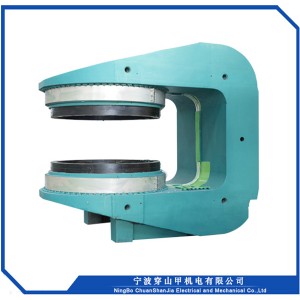EPR-60
Electron paramagnetic resonance (EPR) is a kind of magnetic resonance technology originated from the magnetic moment of unpaired electrons. It can be used to qualitatively and quantitatively detect the unpaired electrons contained in the atoms or molecules of substances, and explore them. The structural characteristics of the surrounding environment. For free radicals, the orbital magnetic moment has almost no effect, and most of the total magnetic moment (above 99%) contributes to the electron spin, so electron paramagnetic resonance is also called "electron spin resonance" (ESR).
Electron paramagnetic resonance was first discovered by former Soviet physicist E·K·Zavois in 1944 from MnCl2, CuCl2 and other paramagnetic salts. Physicists first used this technique to study the electronic structure, crystal structure, dipole moment, and molecular structure of certain complex atoms. Based on the results of electron paramagnetic resonance measurements, chemists clarified the chemical bonds and electron density distributions in complex organic compounds, as well as many problems related to the reaction mechanism. American B. Commoner et al. introduced electron paramagnetic resonance technology to the field of biology for the first time in 1954. They observed the existence of free radicals in some plant and animal materials. Since the 1960s, due to the continuous improvement of instruments and the continuous innovation of technology, electron paramagnetic resonance technology has been used in physics, semiconductors, organic chemistry, complex chemistry, radiation chemistry, chemical engineering, marine chemistry, catalysts, biology, and biology. It has been widely used in many fields such as chemistry, medicine, environmental science, and geological prospecting.
It is mainly used for the detection of free radicals and paramagnetic metal ions and their compounds to obtain structure and composition information. For example: measuring the magnetic susceptibility of paramagnets, the study of magnetic thin films, conducting electrons in metals or semiconductors, some local lattice defects in solids, radiation damage and radiation transfer, ultraviolet radiation short-lived organic free radicals The nature of the electrochemical reaction process, the behavior of free radicals in corrosion, the structure of metal complexes in coordination chemistry, the power saturation point of human hair free radicals, the relationship between free radicals in cell tissues and diseases, and the mechanism of environmental pollution.
1、Magnetic field range:0~7000Gauss continuously adjustable
2、Pole head spacing:60mm
3、Cooling method:water cooling
4、Overall weight:<500kg
Can be customized according to customer needs






